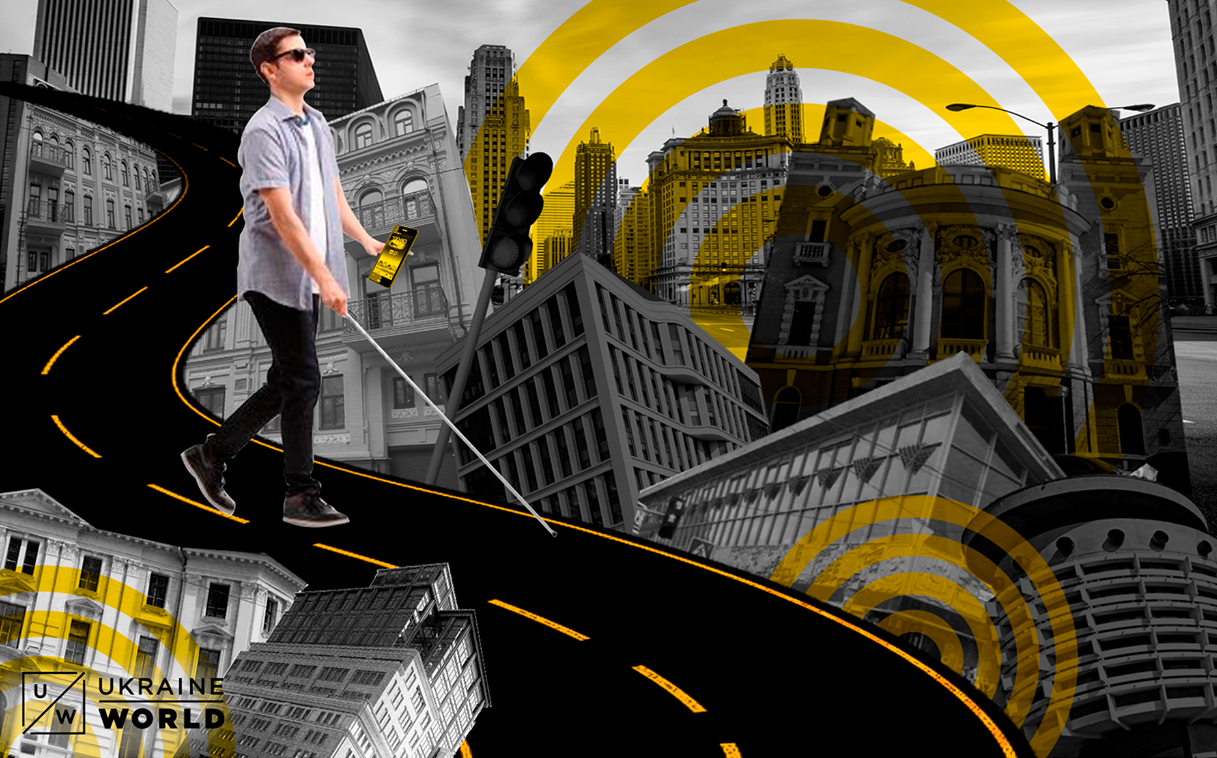
In Ukraine, disabled people often stay home. Ukrainian cities are typically not adapted to their needs. People with hearing impairments, for example, can face challenges when placing an order in a café. Those with visual impairments may have trouble using public transport, and people who use wheelchairs face difficulties interacting with employees who stand behind high counters.
According to the State Statistics Service of Ukraine, there were over 2.6 million disabled people in the country in 2016. That's around 6 percent of all Ukrainian citizens.
Modern technologies and innovative solutions can improve their lives significantly by adapting urban environments to the needs of all residents.
There are not many such inventions; this is not a typical focus for start-ups. But some advances have been made, and are already working in Ukraine. And these advances have brought Ukraine closer to achieving the Sustainable Development Goals adopted at the UN Sustainable Development Summit in 2015.
The main principle while implementing these goals in Ukraine is 'not to leave anyone aside.' Innovations better integrating disabled people into social life ideally match this motto.Let's look closer at some of them.

OpenWorld, a Ukrainian social project, has developed Bluetooth beacons helping blind people with spatial orienteering. These beacons are attached to urban infrastructure objects like bus stops, pharmacies, and supermarkets. Anyone can post them, though one must remember to register them online.
The system works in conjunction with a mobile app that scans for beacons as one moves around the city. When it detects one in the vicinity of the user, it provides a notification, and the user then has the option of receiving additional information from the beacon like its address, the store's hours of operation, or the route number and direction of the associated bus stop.
This is extraordinarily useful for blind users, who can receive all of this information about their surroundings audibly.
Mobile phone is an important part of this system. Blind people can install an app which literally voices everything that is on the screen.
This invention will help disabled people to walk around the city more secure and with greater confidence.
"Blind people often prefer to stay home. They cannot use urban infrastructure on their own. We are trying to change that [by] giving them access to our system," Ivan Selezniov, one of the project creators, tells UkraineWorld.
Two years ago the OpenWorld team tested the system on the Maidan Nezalezhnosti metro station. Now it is tested independently by blind people in Kyiv. Also, there are plans to introduce it in the town of Brovary.

People with a hearing impairment often face difficulties in communicating in banks, restaurants, and other public places. BeWarned, a Ukrainian start-up, has invented theConnectPro app to solve this problem.
ConnectPro is the most innovative invention of this start-up.
"It's a unique combination of so many technologies like voice recognition, text-to-speech technology, QR-codes, [and] double encryption," Yurii Kozyk, Business Developer, tells UkraineWorld.
A deaf user scans QR-code, and then he or she can immediately communicate. When the user types something on the smartphone, personnel in a public place like a hospital or cafe can see the text on his/her own smartphone. They can then text back, either by typing or through voice-to-text technology.The answer appears on the screen of the deaf client.

BeWarned developers have also invented SL Interpreter. A person with a hearing impairment can ask a sign language interpreter to call emergency services like ambulances, police, or fire rescue services through video chat.
This app is useful in daily life as well.
"Deaf people often use it at work to communicate with colleagues and bosses. It was difficult without this app. And company management wasn't aware of the opinions of these people and, therefore, didn't take them into account. Thanks to this app, people with hearing impairments can express their concerns, points of view, and ideas," Yurii says.

Universal design means designing a space in a way that's convenient for everybody.
If there are stairs and ramps at the entrance to a building, then the ramp is an adjustment added to make the entrance more accessible. But if there is a step-free entrance instead, this is an example of universal design.
The UN Development Programme supports implementing universal design principles in Ukraine. It works together with the World Health Organization and International Labour Organization with the support of the UN Partnership to Promote the Rights of Persons with Disabilities.
The Lviv theatre for children and youth already has already begun adapting its plays for blind people using audio description. A voiceover explains everything that is happening on the stage: the set and the actions of the actors.
The programme also supports the exchange of experiences. "We will invite representatives of other theatres to see and introduce the same [accomodations], where possible. They should buy the necessary equipment, [including] headphones with transmitters as for simultaneous interpretation. Also, they should train people to narrate plays," Olena Ivanova, UNDP project manager, tells UkraineWorld.
UNDP is implementing 10 mini-projects in 10 Ukrainian cities. It is introducing elements of universal design in medical facilities, kindergartens, a social centre, library, and playgrounds. Almost 145,000 disabled people will benefit from these projects.

Other organizations and companies apply universal design principles as well. For example, the Boryspil airport staff provides support for passengers with disabilities during boarding. In Terminal D, there are also universal toilet cabins. Counters and telephones are located at lowered heights and are thus accessible for wheelchair users. Moreover, pedestrian crossings have curb ramps for everyone.
These technologies and innovative solutions are not yet widespread.Ukrainians with functional impairments use them, though only locally. Still, they have a lot of potential to better engage these people into social life. It is important not to leave anyone aside.
The original text was firstly published in Ukrainian here.
